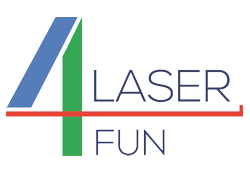Results of the work in the Laser4Fun project has been published as:
van der Poel, S.H., Mezera, M., Römer, G.R.B.E., de Vries, E.G., Matthews, D.T.A., Fabricating Laser-Induced Periodic Surface Structures on Medical Grade Cobalt–Chrome–Molybdenum: Tribological, Wetting and Leaching Properties. Lubricants 2019, 7(8), 70.
Abstract
Hip-implants structured with anti-bacterial textures should show a low-friction coefficient and should not leach hazardous substances into the human body. The surface of a typical material used for hip-implants, namely Cobalt–Chrome–Molybdenum (CoCrMo) was textured with different types of laser-induced periodic surface structures (LIPSS)—i.e., low spatial frequency LIPSS (LSFL), hierarchical structures consisting of grooves superimposed with high spatial frequency LIPSS (HSFL) and Triangular shaped Nanopillars (TNP)—using a picosecond pulsed laser source. The effect of LIPSS on the wettability, friction, as well as wear of the structures, when slid against a polyethylene (PE) counter surface and biocompatibility was analyzed. Surfaces covered with LSFL show superhydrophobicity and grooves with superimposed HSFL, as well as TNP, show hydrophobic behavior. The coefficient of friction (CoF) of LIPSS against a polyethylene (PE) counter surface was found to be higher (ranging from 0.40 to 0.66) than the CoF of (polished) CoCrMo, which was found to equal 0.22. It was found that the samples release cobalt within biocompatible limits. Compared to polished reference surfaces, LIPSS cause higher friction of CoCrMo against PE contact. However, the wear of the PE counter surface only increased significantly for the LSFL textures. For these reasons, it is concluded that LIPSS are not suitable for a heavily loaded metal-on-plastic bearing contact.
